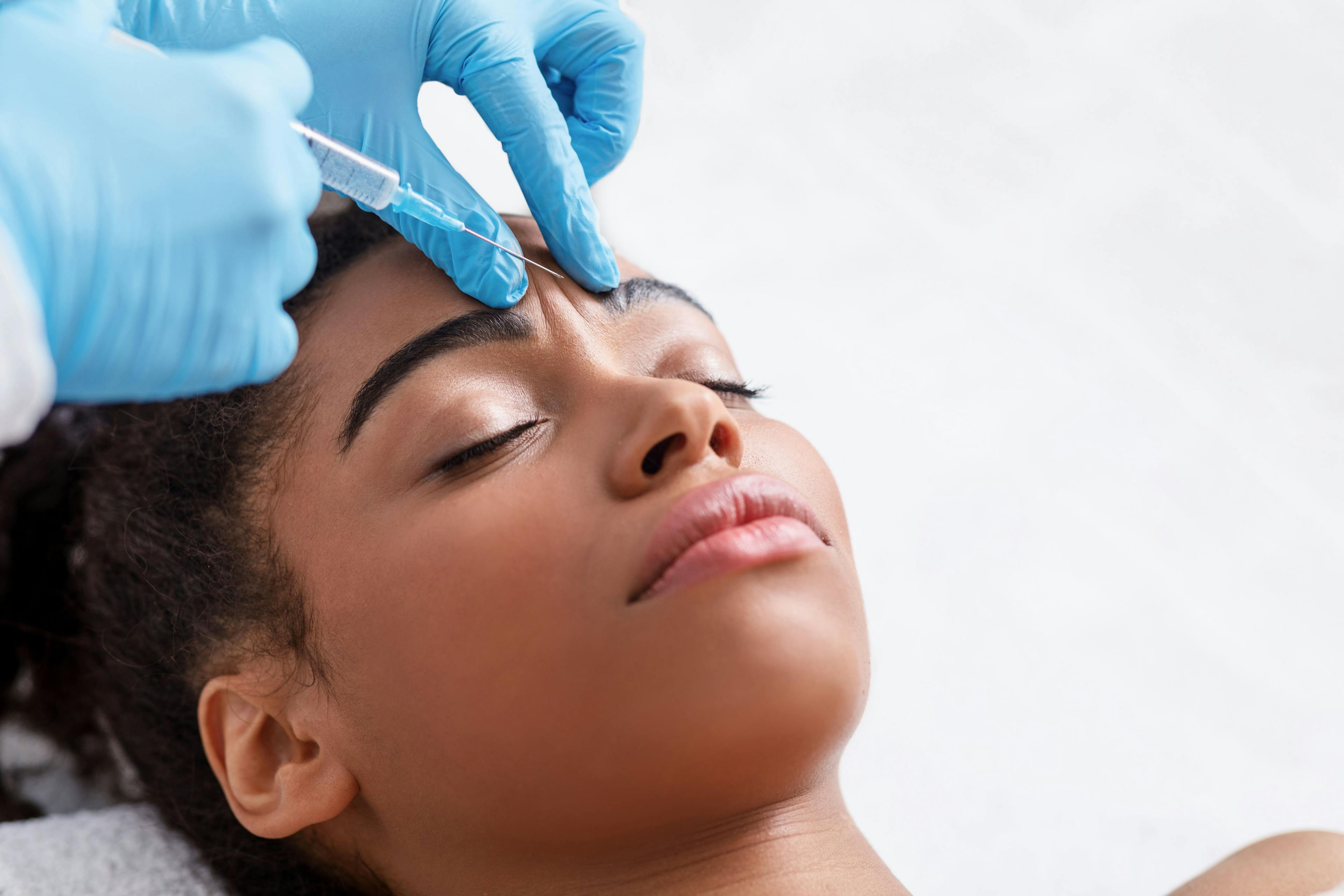- Acne
- Actinic Keratosis
- Aesthetics
- Alopecia
- Atopic Dermatitis
- Buy-and-Bill
- COVID-19
- Case-Based Roundtable
- Chronic Hand Eczema
- Chronic Spontaneous Urticaria
- Drug Watch
- Eczema
- General Dermatology
- Hidradenitis Suppurativa
- Melasma
- NP and PA
- Pediatric Dermatology
- Pigmentary Disorders
- Practice Management
- Precision Medicine and Biologics
- Prurigo Nodularis
- Psoriasis
- Psoriatic Arthritis
- Rare Disease
- Rosacea
- Skin Cancer
- Vitiligo
- Wound Care
News
Article
Dermatology Times
The Role of Vitamins and Nutrients in Rosacea Management
Author(s):
A recent study reviewed the current evidence on the impact of key vitamins and minerals on rosacea and provided clinical recommendations.
Despite advancements in topical and systemic therapies, long-term rosacea management often necessitates alternative or adjunctive treatments. Vitamins and minerals have garnered attention for their potential role in managing rosacea, offering a cost-effective and safe option. A recent study reviewed the current evidence on the impact of key vitamins and minerals on rosacea, providing insights into their potential benefits and recommendations for clinical practice. Clinical recommendations were drawn from a search and consensus of PubMed, Web of Science, Science Direct, Google Scholar, and ClinicalTrials.gov studies from 1998 to 2023 (Figure).1

Vitamin A and Its Derivatives
Vitamin A, particularly in the form of retinoids, has demonstrated significant efficacy in managing rosacea. Retinoids, such as isotretinoin, regulate keratinocyte proliferation and differentiation, offering anti-inflammatory effects that are beneficial in rosacea treatment.
Oral Isotretinoin
Oral isotretinoin has shown promise in refractory cases of rosacea. A multicenter trial with 92 patients reported substantial improvement following a 20-week isotretinoin regimen. Another study involving 22 patients with severe papulopustular rosacea (PPR) noted a decrease in inflammatory lesions and erythema within 9 weeks of daily 10 mg isotretinoin administration, further improving by week 16. These findings emphasize isotretinoin’s potential across various rosacea subtypes, including erythematotelangiectatic rosacea (ETR) and phymatous rosacea.2
Topical Retinoids
Topical retinoids, such as tretinoin and adapalene, have also been explored. A double-randomized controlled trial evaluated a clindamycin phosphate 1.2% and tretinoin 0.025% gel in 79 patients, noting improvements in telangiectatic components and ETR.3 Adapalene gel 0.1% was also shown to significantly reduce inflammatory lesions compared with metronidazole, highlighting its potential as an adjunct treatment for PPR.4
B Vitamins
Limited studies have evaluated B vitamins in rosacea, but emerging evidence suggests their potential benefits. Previous studies suggest that vitamins B2, B9, and B12 are linked to rosacea. Recently, it was discovered that PPR severity correlated with decreased B12 and B9 levels.5 Vitamins B3 (niacinamide) and B12 (cobalamin) have shown promise in managing rosacea symptoms.
Vitamin B3
Niacinamide, known for its anti-inflammatory properties, has demonstrated efficacy in improving skin barrier function and reducing redness and inflammation. A pilot study found that 76.4% of patients experienced symptom improvement with topical 1-methylnicotinamide (MNA). Additionally, topical nicotinamide adenine dinucleotide hydrogen (NADH) showed marked reduction in erythema and pustules in 30% of patients, with moderate improvement in 50%.6
Vitamin B12
Cobalamin’s role in rosacea is complex, with both beneficial and exacerbating effects reported. A case series study indicated that intramuscular injections of hydroxocobalamin significantly decreased erythema and skin surface temperature in patients with rosacea. However, high doses of B12 have been associated with triggering rosacea fulminans, necessitating careful consideration in clinical use.7
Zinc
Zinc, a mineral with anti-inflammatory and antioxidant properties, has shown potential in managing rosacea symptoms. A study on zinc sulfate solution 5% found significant reductions in acne rosacea severity, with 40% and 60% of patients exhibiting moderate or good responses, respectively. Investigators say zinc’s role in reducing inflammatory lesions and promoting skin healing makes it a valuable adjunct treatment for rosacea.8
ω-3 Fatty Acids
ω-3 fatty acids, known for their anti-inflammatory effects, have shown promise in managing ocular rosacea. A study found significant improvement in alleviating xerophthalmia in 65% of patients with ocular rosacea. The incorporation of ω-3 fatty acids into the diet or as supplements could provide a beneficial adjunctive treatment for rosacea patients.9
Vitamin D
Vitamin D, known for its immunomodulatory effects, has been investigated for its role in rosacea. A few cross-sectional studies suggest that vitamin D supplementation may help reduce inflammation and improve skin lesions. One investigation demonstrated that patients with rosacea have significantly lower serum vitamin D levels (12.18 ± 5.65 ng/ml) compared with healthy controls (17.41 ± 6.75 ng/ml).10 Conversely, other cross-sectional studies have reported higher vitamin D levels in patients, implying that elevated vitamin D levels might contribute to the development of rosacea.11 One study even suggested that vitamin D levels could serve as a diagnostic marker for rosacea, with a cutoff point of 19.6 ng/ml showing 80% sensitivity, 75% specificity, and 78% accuracy.12 However, the outcomes are varied, and further research is needed to establish definitive recommendations.
Vitamin K
Topical vitamin K has demonstrated therapeutic benefits in managing aging-related vascular symptoms, wound healing, skin pigmentation issues, and superficial vascular conditions. In a recent RCT involving 75 female patients with steroid-induced rosacea, those treated with 1% topical vitamin K cream showed significant improvement in erythematotelangiectasia severity scores over 8 weeks compared with the placebo group. Despite these promising findings, further research with larger patient samples is necessary to confirm vitamin K’s efficacy in treating rosacea.13
Researchers concluded that more research and larger sample sizes are needed for further guidance.
References
1. Algarin YA, Pulumati A, Jaalouk D, Tan J, Nouri K. The role of vitamins and nutrients in rosacea. Arch Dermatol Res. 2024;316(5):142. doi:10.1007/s00403-024-02895-4
2. Park H, Del Rosso JQ. Use of oral isotretinoin in the management of rosacea. J Clin Aesthet Dermatol. 2011;4(9):54-61.
3. Chang AL, Alora-Palli M, Lima XT, et al. A randomized, double-blind, placebo-controlled, pilot study to assess the efficacy and safety of clindamycin 1.2% and tretinoin 0.025% combination gel for the treatment of acne rosacea over 12 weeks. J Drugs Dermatol. 2012;11(3):333-339.
4. Altinyazar HC, Koca R, Tekin NS, Eştürk E. Adapalene vs. metronidazole gel for the treatment of rosacea. Int J Dermatol. 2005;44(3):252-255. doi:10.1111/j.1365-4632.2004.02130.x
5. Chung BY, Kim HO, Park CW, et al. Relationships of serum homocysteine, vitamin B12, and folic acid levels with papulopustular rosacea severity: a case-control study. Biomed Res Int. 2022;2022:5479626. doi:10.1155/2022/5479626
6. Wozniacka A, Wieczorkowska M, Gebicki J, Sysa-Jedrzejowska A. Topical application of 1-methylnicotinamide in the treatment of rosacea: a pilot study. Clin Exp Dermatol. 2005;30(6):632-635. doi:10.1111/j.1365-2230.2005.01908.x
7. Huang YW, Huang HP, Hsu CK, Lee JY. Hydroxocobalamin: an effective treatment for flushing and persistent erythema in rosacea. J Clin Aesthet Dermatol. 2022;15(6):42-45.
8. Sharquie KE, Noaimi AA, Al-Hashimy SA, Al-Salih MM. Therapeutic evaluation of 2% tea lotion in comparison with 5% zinc sulfate solution in the treatment of acne rosacea. J Cosmet Dermatol Sci Appl.2014;4:60-65. doi:10.4236/jcdsa.2014.41009
9. Bhargava R, Kumar P, Kumar M, Mehra N, Mishra A. A randomized controlled trial of omega-3 fatty acids in dry eye syndrome. Int J Ophthalmol. 2013;6(6):811-816. doi:10.3980/j.issn.2222-3959.2013.06.13
10. Schauber J, Gallo RL. The vitamin D pathway: a new target for control of the skin’s immune response? Exp Dermatol. 2008;17(8):633-639. doi:10.1111/j.1600-0625.2008.00768.x
11. Park BW, Ha JM, Cho EB, et al. A study on vitamin D and cathelicidin status in patients with rosacea: serum level and tissue expression. Ann Dermatol. 2018;30(2):136-142. doi:10.5021/ad.2018.30.2.136
12. Hagag MM, Bayomy NR, El-Horish DBM. Study of vitamin D and calcium levels in patient with rosacea. Egypt J Hosp Med.2021;84(1):2405-2410.doi:10.21608/EJHM.2021.184656
13. Abdullah GA. The effectiveness of topical vitamin K cream 1% in the treatment of steroid-induced rosacea. Res J Pharm Technol.2020;13(8):3883-3886. doi:10.5958/0974-360X.2020.00687.3

Newsletter
Like what you’re reading? Subscribe to Dermatology Times for weekly updates on therapies, innovations, and real-world practice tips.
















